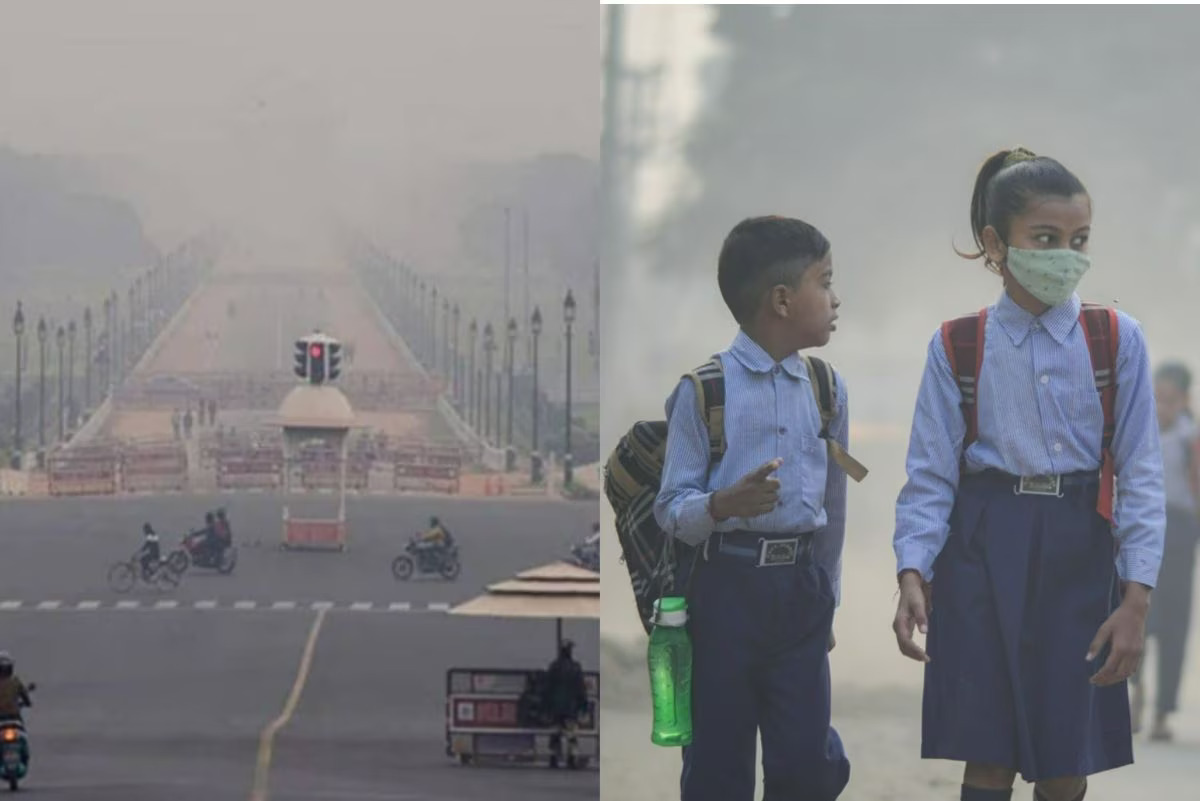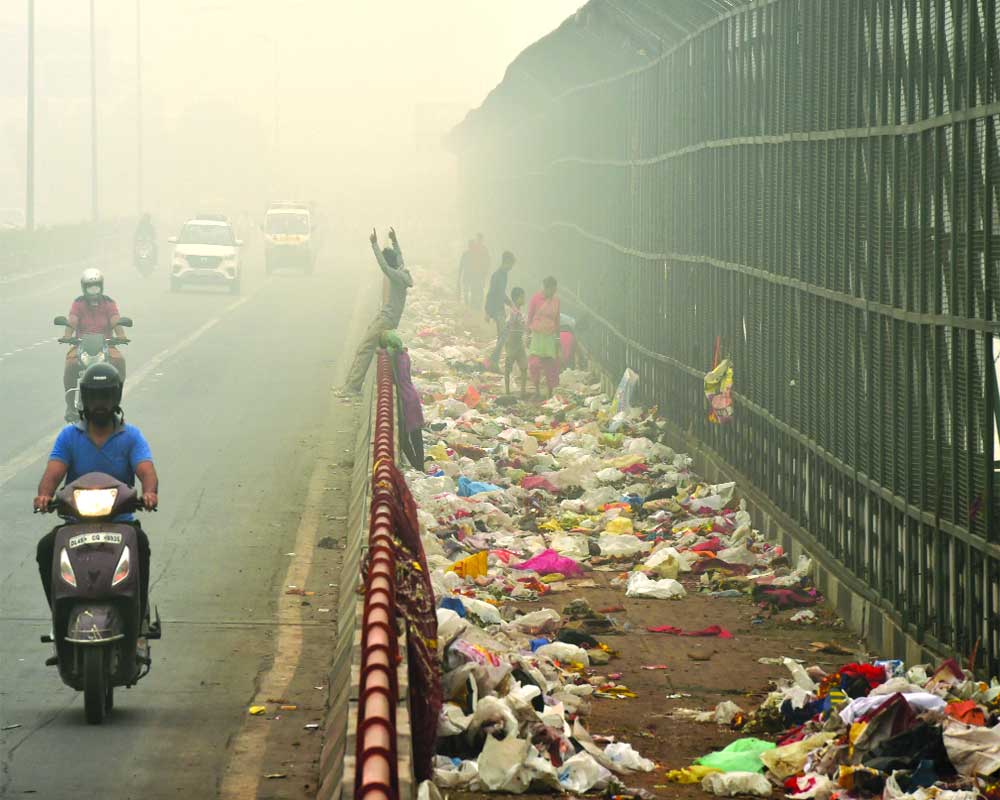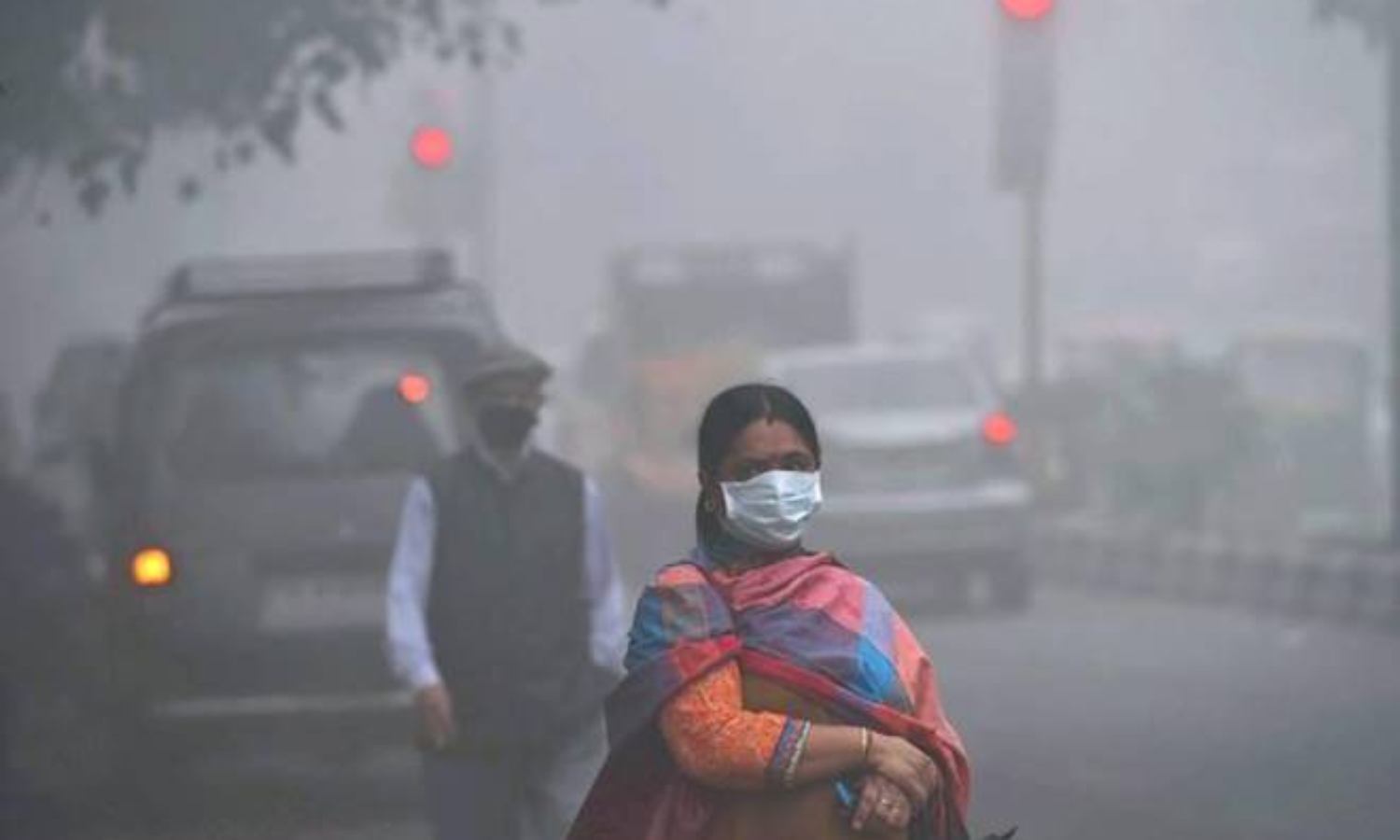In the Chokehold of Smog
As Delhi and its surrounding areas grapple with persistent air quality challenges, Double Helical brings you an in-depth exploration encompassing concerted efforts and expert perspectives aimed at curbing pollution in India. From collaborative global initiatives to national programmes, discover the comprehensive strategies aimed at alleviating the pressing environmental and health concerns posed by the air quality crisis……
By abhigyan & Abhinav
With severe air quality, New Delhi consistently ranks among the world’s most polluted cities. This undesirable status recurs annually ahead of the onset of winter, characterized by calm winds and low temperatures that trap pollutants from various sources, including vehicles, industries, construction dust, and the burning of crop residues in nearby fields.
In pursuit of cleaner air, the World Health Organization (WHO) has recently introduced Air Quality Guidelines proposing a refined outdoor particle pollution concentration of five micrograms per cubic meter. However, the air quality regulations in numerous major global cities fall short of meeting these WHO standards. Over the years, air pollution has steadily increased, resulting in approximately seven million fatalities annually. From 1998 to 2021, the average annual particulate pollution surged by 67.7 percent, consequently diminishing average life expectancy by 2.3 years. India alone contributed 59.1 percent to the global increase in pollution from 2013 to 2021.
 Insights from Experts
Insights from Experts
Dr Suneela Garg, Chair of the Advisory Committee at the National Institute of Health Family Welfare and a Lancet Commission Member, points out the dangerous limitation in policy development worldwide due to inadequate information on different air pollutants and their sources. The fifth annual World Air Quality Report 2023 identifies India as the eighth most polluted country globally, with an annual average PM2.5 concentration of 53.3 micrograms per cubic meter, surpassing WHO recommendations tenfold.
According to Dr A K Singh, Senior Neuro Physician and Chairman of Max Superspeciality Hospital, Dehradun, unfavourable meteorological conditions, coupled with vehicular emissions, paddy straw burning, firecrackers, and other local pollution sources, contribute to hazardous air quality levels in Delhi-NCR every winter. While urbanisation attracts people seeking better opportunities, it also intensifies air pollution, leading to various health issues, including cardiovascular disease, respiratory problems, type 2 diabetes, and respiratory infections. Dr. A K Singh laments the lack of attention to the issue until a few days before Diwali, where blame is wrongly placed on the festival for the ongoing pollution cycle.
 Dr A K Agarwal, Medical Advisor at the Apollo Group of Hospitals, underscores the WHO’s Air Quality Guidelines and the concerning inadequacy of air quality regulations in major global cities. As per the Lancet report, air pollution in India caused an estimated 1.7 million premature deaths in 2019, constituting nearly 17.8 per cent of total recorded deaths, the highest globally. The environmental think tank, the Centre for Science and Environment (CSE), reveals a 2.6-year decrease in life expectancy in India due to diseases linked to air pollution. Air pollution has emerged as the most significant risk factor for non-communicable diseases.
Dr A K Agarwal, Medical Advisor at the Apollo Group of Hospitals, underscores the WHO’s Air Quality Guidelines and the concerning inadequacy of air quality regulations in major global cities. As per the Lancet report, air pollution in India caused an estimated 1.7 million premature deaths in 2019, constituting nearly 17.8 per cent of total recorded deaths, the highest globally. The environmental think tank, the Centre for Science and Environment (CSE), reveals a 2.6-year decrease in life expectancy in India due to diseases linked to air pollution. Air pollution has emerged as the most significant risk factor for non-communicable diseases.
Health Impacts of Air Pollution
Air pollution is a significant contributor to various health issues, including asthma, cancer, and heart disease. Notably, during the COVID-19 pandemic, elevated PM2.5 levels heightened the risk of viral infections and severe symptoms. Reports indicate that the transport industry in India is accountable for 20–35% of PM2.5 pollution, with biomass fuel usage, industrial plants, and coal-fired power plants exacerbating air quality. Delhi, the capital, experiences a PM2.5 concentration about 20 times higher than the recommended level.
Broadening Perspectives on Air Pollution’s Impact
While familiar effects of air pollution include lung cancer, respiratory issues, cardiovascular diseases, stroke, and acute respiratory infections, new epidemiological studies suggest broader health impacts, affecting birth weight, child development, cognition, insomnia, fertility, cerebral health, and susceptibility to various cancers. These effects are often overlooked when estimating the disease burden, leading to a substantial understatement of air pollution’s overall impact in India.
Poor air quality also results in lower labour productivity, increased employee absenteeism, diminished asset productivity, and higher healthcare costs. Despite these consequences, welfare losses remain unrecognized and unquantified when calculating the total impact of air pollution. Estimates suggest that air pollution costs about $95 billion annually, roughly 7 lakh crore, constituting around 3.3 percent of India’s total GDP. According to the Global Burden of Disease Study, economic losses from premature deaths and morbidity caused by air pollution amounted to $36.8 billion, or 1.36 percent of India’s GDP.

Ocular Health and Air Pollution
Dr Vinay Aggarwal, Past National President, Indian Medical Association, underscores air pollution’s serious impact on health, affecting respiratory and cardiovascular health and increasing hospital admissions and healthcare spending. Notably, air pollution has observable effects on ocular health, including damage to the preocular tear film, cornea, and conjunctiva. High concentrations of toxic pollutants may cause a narrowing of retinal vessels and potentially contribute to cataracts. Despite the impact on ocular health, research in this area remains limited regarding direct associations with different ophthalmological abnormalities.
Challenges in Combating Pollution
Dr Sanjiv Kumar Varshney, Senior Scientist, Department of Science and Technology, New Delhi, emphasises the adverse health effects of climate change, including those from extreme weather events and water-borne diseases. The debate centres on the challenges countries face and the obstacles hindering assistance in improving ambient air quality. Lack of access to information on air pollutant levels and their sources remains a significant barrier to policy development.
There is often a lack of awareness about the health burden of ambient air pollution, attributed to limited international evidence awareness and information gaps from air quality monitoring. Improving ambient air pollution requires an inter-sectoral approach, with considerations in policy planning across different economic sectors to ensure the greatest health benefits. There is also significant inequality in exposure to air pollution, creating a disproportional disease burden in populations with limited incomes and minimal local resources to take action.
Exposure estimates for ambient air pollution rely on a global model incorporating surface monitoring data, atmospheric transport models, and satellite observations. This approach offers the advantage of estimating risks in countries with limited local data. However, all studies are observational, and few measure exposure directly, leading to poorly quantified and potentially biased risk estimates.
 Global Initiatives
Global Initiatives
The WHO maintains a comprehensive worldwide public database on urban outdoor air pollution in its Global Health Observatory. This database includes measured outdoor air pollution levels of PM2.5 and PM10 from 1100 cities in 92 countries for the years 2003-2010, utilized for estimating mean annual exposures of the urban population to fine particulate matter.
In 2013, the WHO initiated collaboration with major institutions and agencies worldwide to develop a global air pollution platform. This platform incorporates data on air pollution concentrations derived from satellite monitoring, chemical transport models, and ground measurements. It also includes inventories of pollution emissions from key sources and models of air pollution drift, allowing for estimates of air pollution exposures even in areas without ground-level monitoring stations.
According to Dr Neeraj Nagpal, Managing Trustee, Medico Legal Action Group, and Ex-President, IMA, Chandigarh, the WHO’s primary function is to identify and monitor air pollutants with the greatest impact on people’s health. This assists WHO Member States in focusing their actions on the most effective ways to prevent or reduce health risks. WHO’s responsibility involves reviewing and analyzing scientific evidence, using expert advice to draw conclusions on the health impact of different air pollutants, and identifying effective measures to reduce the air pollution burden.
Dr Neeraj Nagpal emphasizes that patients with chronic respiratory illnesses should avoid outdoor activities during high levels of particulate matter in ambient air. The use of surgical masks provides psychological benefits only, and if masks are to be used, they should be N95, N99, or N100 to filter out non-oil-based pollutants. Urgent legislative and administrative reforms are needed to address the deteriorating situation in Delhi/NCR. Political conflicts between states create a confrontational environment that hinders effective solutions.
WHO estimates that 12.7% of deaths worldwide could be averted by improving air quality. Lower levels of air pollution would reduce the burden of respiratory and cardiovascular diseases, healthcare costs, and lost worker productivity due to illness. Additionally, it would increase life expectancy among local populations. Actions to reduce ambient air pollution also contribute to cutting emissions of short-lived climate pollutants, including black carbon and greenhouse gases, addressing long-term climate change impacts.
Need for Strict Implementation of Policy Initiatives
Exposure to indoor air pollution contributes to nearly two million excess deaths in developing countries, comprising around four percent of the global burden of disease. The full extent of air pollution’s effects is often understated in India, affecting birth weight, child development, cognition, and overall health. Air pollution costs approximately $95 billion annually, around 3.3% of India’s GDP. Notably, from 2013 to 2021, 59.1% of the world’s pollution increase occurred in India.
Recognising the severe public health threat posed by air pollution, the government has initiated foundational steps through the Ministry of Environment, Forests, and Climate Change (MoEFCC). The implementation of the National Clean Air Programme, a time-bound national-level strategy to combat rising air pollution by 2024, reflects a proactive approach.
Further, the Government can identify the main sources of ambient air pollution and implement policies known to improve air quality. These include promoting public transport, walking, and cycling over private motor vehicles, endorsing power plants using clean and renewable fuels, and enhancing energy efficiency in homes, commercial buildings, and manufacturing. Essential accompanying steps involve increasing awareness of the disease burden from ambient air pollution, highlighting its main sources, and advocating for country-specific interventions. Effective monitoring is crucial to evaluate and communicate the impact of interventions, driving policy actions for health, climate, and the environment.
Improving air quality through various measures, including promoting public transport and cleaner fuels, can reduce the disease burden and enhance productivity. Policymakers should prioritize air quality improvement and awareness as well as the use of effective monitoring and evaluation.

